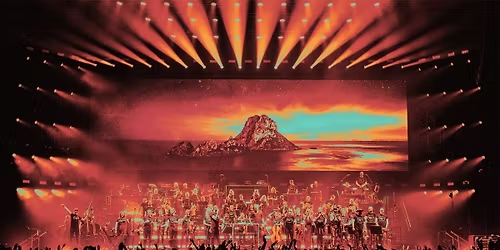
About this Event
We are delighted to present an evening of piano four-hands music on 12 December at Leighton House, performed by pianists Cristian Sandrin and Tal Walker. Featuring an imaginative programme bringing together 19th and 20th-century dreamlike fantasy pieces by Debussy, Schubert and Poulenc.
The artist and designer Lord Frederick Leighton (1825–1910) was a prominent figure in the avant-garde Aesthetic Movement, which believed that art should uplift by beauty and form rather than moral truths. Orientalism was fashionable and Leighton was inspired by his travels in the Ottoman Empire. Leighton House with its marble columned Arab Hall lined with antique iznik-tiles and a gilded dome is a famous example of Aesthetic design. Now a museum, you can enjoy Leighton's treasures by attending our seasonal celebration concert in this enchanted Arabian Nights setting
Cristian Sandrin, piano
"immensely rewarding" – International Piano Magazine
Tal Walker, piano
"a pianist whose clarity illuminates the music" – International Piano Magazine
Claude Debussy – Prélude à l’après-midi d’un faune (arr. for piano four hands by Maurice Ravel) – This enchanting one-movement piece was composed by Claude Debussy in 1894 and later choreographed into a ballet by Vaslav Nijinsky. Originally an orchestral work, it was inspired by the symbolist poem “L’après-midi d’un faune” by Stéphane Mallarmé and is often regarded as a milestone in the shift toward modernism in music. Debussy’s use of floating harmonies, ancient harp and flute textures, and colour-oriented orchestration challenged the dominant tonal-functional system. Maurice Ravel’s subsequent arrangement for piano four hands adapts those textures for the duet medium, preserving its lyrical opening flute-like line and shimmering harmonic world.
Claude Debussy – Six épigraphes antiques – Debussy composed this suite for piano four hands (completed in July 1914) using material originally written in 1901 as incidental music for Pierre Louÿs’s “Les Chansons de Bilitis.” The six brief pieces evoke ancient Greece and Egypt, creating a world with themes from nature and ancient gods (with titles such as “Pour invoquer Pan, dieu du vent d’été” and “Pour remercier la pluie au matin”). In selecting and refining earlier material, Debussy turned to a more introspective and subtle piano-duet idiom. The pieces may be seen as part of Debussy’s interest in non-standard harmonic color, timbre-evoking textures (flute, harp, crotales in the original), and an evocation of exoticism, ritual, antiquity, and nature.
Franz Schubert – Fantasie in F minor, D.940 – Composed by Schubert in early 1828 (the final year of his life), this piano-four-hands work is dedicated to his pupil Karoline Esterházy and was published posthumously in March 1829. The work is cast in four interconnected movements (Allegro molto moderato, Largo, Allegro vivace, Finale), played without a break, and embodies Schubert’s mature style for the duet genre: lyrical themes, dramatic dynamic contrasts, surprising harmonic shifts, a final fugue, and structural unity built from poetic lyricism and emotional depth. It stands among his most significant pieces for piano duet and reflects both his technical mastery and the poignancy of his final year.
Francis Poulenc – Sonata for Piano Four Hands – Influenced by Satie, Stravinsky, and Bartók, this Sonata was written in 1918 when Francis Poulenc was only nineteen. This early work by the French composer (a member of the group known as Les Six) reflects his gift for melody, clarity, and economy of form within the medium of the piano duet. Although modest in scale, the sonata showcases Poulenc’s mixture of percussive-like rhythms interwoven with rustic folk melodies and forms part of his youthful output alongside other small-form works, helping to establish his subsequent career in chamber and piano music.
Event Venue & Nearby Stays
Leighton House, 12 Holland Park Road, London, United Kingdom
GBP 0.00 to GBP 33.22












